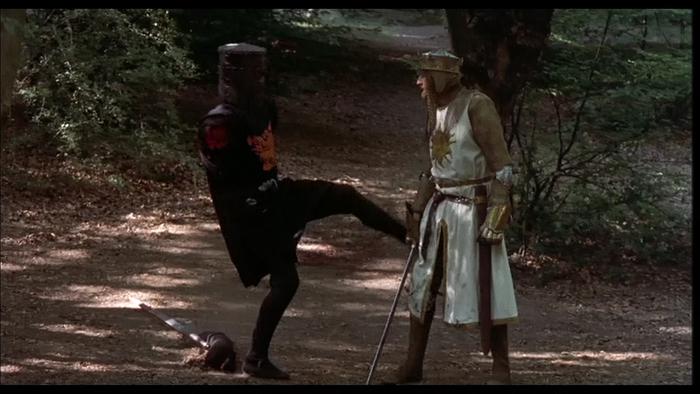Results 31 to 40 of 47
Thread: Dose this make sense to you?
-
10-11-2016, 01:49 AM #31

For 1 - As I said in my post, I was only responding to one of Oz's points (could a low grit hone give a finish like a higher grit hone). That being said, it most certainly is the case that every stone falls into a "grit range." Whether that range can be defined or provides much meaningful information is another question. But no, I was not talking about the "natural stone" in question.
For 2 - I could be wrong, but I don't see how cutting deeply vs cutting shallowly could provide the same result on an edge, measured by scratch pattern or shave. Especially if the abrasive starts to wear down or wear away but the binder does not. For example DMT's "break in" and "wear," and the way they cut/lap changes. Once again, not in reference to the "natural stone" in question.
-
The Following User Says Thank You to holli4pirating For This Useful Post:
Hirlau (10-11-2016)
-
10-11-2016, 01:53 AM #32
-
10-11-2016, 01:59 AM #33

You guys are KILLING me!

-
10-11-2016, 02:08 AM #34

I think how/if the abrasive fractures would have to be taken in to account ie if the tops of a stone or DMT chip off flat & cut like a wood plane rather than sandpaper . You still have to consider the gaps between the particles. Here pressure would still influence the finish . That said, a worn DMTC gives a nice polish to natural stones, at least to the naked eye.
The white gleam of swords, not the black ink of books, clears doubts and uncertainties and bleak outlooks.
-
10-11-2016, 02:20 AM #35

It's mostly rubbish, this thread. Boring as the forum is!

I'm not dead yet!

-
10-11-2016, 02:54 AM #36

A thread has run its course when the Monty Python Memes start.
The white gleam of swords, not the black ink of books, clears doubts and uncertainties and bleak outlooks.
-
10-11-2016, 03:03 AM #37
-
10-11-2016, 03:08 AM #38Senior Member

- Join Date
- Aug 2013
- Location
- NYC, NY
- Posts
- 1,496
Thanked: 169
Sort of reeling it all back in, if Lynn is at all interested, he should send him a sample..
-
10-11-2016, 08:04 PM #39

Maybe i'm the only one who thinks this is an interesting discussion. Not relating to the OP, but interesting.
On a DMT (or any other hone), there is binder between the abrasive, right? So there is material in the gaps between the bits of abrasive. And, if the abrasive wears down but the binder doesn't, those gaps shrink in size. (Similar effect if swarf "clogs" the hone.) And, by the way, I think that the smoother finish on a natural stone that you get from a worn DMT as opposed to a brand new one tends to support what I'm saying.
-
10-11-2016, 09:53 PM #40Senior Member



- Join Date
- Apr 2012
- Location
- Diamond Bar, CA
- Posts
- 6,553
Thanked: 3215
I see what you are saying, but I think there is a big difference between Diamond plates, Soft naturals (slates, coticules & Jnats) and soft synthetics (Naniwa and Nortons), and hard Naturals, (hard Arks other noviculites, hard jasper like stones, and hard synthetics, (like SG20).
Soft naturals, (slates, coticules & Jnats) are more like regular synthetics in that the binder, releases fresh cutting grit and it is the binder that wears away along with the grit and reveals fresh grit of random size.
With Diamonds, I have always understood, that the diamonds pull out of the binder and not wear away, much like sand paper. Or can become clogged and cut shallower.
My diamonds that cut finer than new, have a visible loss of diamonds, bald spots. When using low grit sandpapers, this same phenomenon is readily visible. A Diamond plate is made up of, diamonds of X grit size, by putting them through a mesh screen. You end up with grit, up to the screen size and smaller grit.
As a Diamond plate wears, the first grit to pull out of the binder are the larger/taller diamonds. The shallower/ shorter diamonds remain and that is what is now cutting at a shallower grit size and depth.
So with Diamond plates, and hard natural / synthetic stones can produce higher finishes, (shallower stria patterns) but for different reasons.
Arks and SG20, can be loaded up or burnished to cut shallower. And Diamond plates, cut shallower because of fewer diamonds, not broken diamonds.
And then there is…Pressure…


 72Likes
72Likes LinkBack URL
LinkBack URL About LinkBacks
About LinkBacks








 Reply With Quote
Reply With Quote


